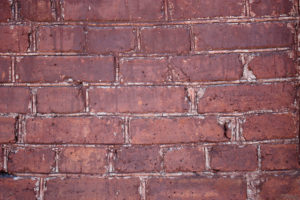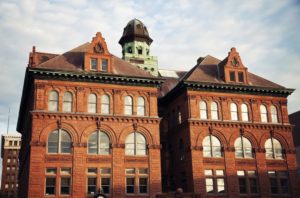Category: Masonry Services
How Is A Historic Building Facade Restored?
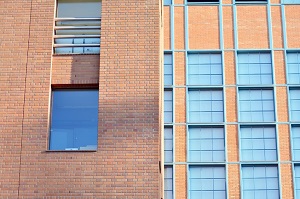
The outside elements can deteriorate a historic building, but fortunately, with the help of professionals, a historic building can have its façade restored.
Painted brick and stone facades can be restored to their initial beauty by first removing the old paint layers. This allows masonry to breathe in a more natural way.
The paint removal procedure can be done with the help of an eco-friendly paint stripper. After the removal, a professional wash can help clean all the pollution accumulations, residues and carbon deposits, re-creating the original appearance of a historic building.
Apart from helping save the environment, restoring building facades can also help you improve your business. At the same time, it can help you increase the value of your property. Having a property restored can also create more jobs and help the community earn more money.
The restoration process depends on your historic building’s façade material, namely whether it is made of brick, glass, etc.
An experienced building restoration company found here http://www.nemasonry.com can help you make the right decisions concerning the best options for your building, as well as the accompanying costs. The main idea is to be able to make the best choices both in terms of investments, and also from the aesthetic point of view.
What Is Tuck Pointing?
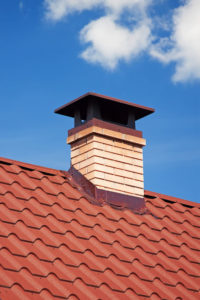
Tuck pointing refers to a special repair process that can be used on chimneys, saving them from water damage and harsh weather conditions. This repair method is basically used for mortar joints.
The bricks on a chimney can last for about 100 years. However, mortar is less time-resistant. Depending on the level of exposure to outside elements, mortar can last for about 25 years.
The masonry restoration technique consists of removing the damaged mortar on a chimney and replacing it with fresh mortar. Tuck pointing prevents water from steeping in through the chimney. Water infiltrations can cause a lot of harm to your home, including wood rotting, mildew or mold. At the same time, it can cause stains on the ceiling or on the wallpaper around the chimney area.
Tuck pointing can help restore the balance and resistance of your chimney. A weak chimney can get deteriorated to the point of leaning or collapsing.
Tuck pointing certainly is more cost-efficient than the actual rebuilding or replacing of an entire chimney. This method can make your chimney structure return to their initial resistance.
Another major reason why tuck pointing is a great idea is that a solid, beautiful chimney can increase the value of your home.
Signs Your Masonry Has Been Damaged by Hail
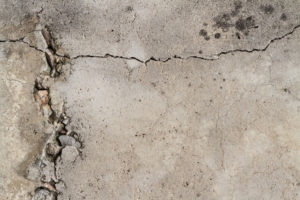 Masonry is used for many purposes around the home – you can use masonry for your exterior walls, for your fence, for your pathway, you can have a masonry fireplace, the list of applications can go on and on. Masonry surely makes versatile, attractive and durable structures, but it can be damaged by strong impact, such as the impact caused by hailstones. Here are the signs of damage that indicate your masonry structure has sustained hail damage:
Masonry is used for many purposes around the home – you can use masonry for your exterior walls, for your fence, for your pathway, you can have a masonry fireplace, the list of applications can go on and on. Masonry surely makes versatile, attractive and durable structures, but it can be damaged by strong impact, such as the impact caused by hailstones. Here are the signs of damage that indicate your masonry structure has sustained hail damage:
- Chips and cracks – when hailstones hit, they hit hard, the most obvious signs of masonry damage being cracks and chips on the masonry surface;
- Red debris – strong impact might also cause masonry surfaces to crumble, so look for red powder on the ground in the area around the masonry structure;
- Discolored areas – your masonry structure might also lose its color in the areas that were more severely hit by hail, so when the storm is gone, start looking for discolorations;
- Damage affecting only one or two of your walls – hailstones are blown by the wind, so the damage is likely to affect only the walls that the wind bumps into;
- Removed mortar – hail can also remove the mortar that is gluing together the pieces of the masonry structure, such as the bricks. Call masonry restoration Connecticut companies for immediate repairs at the first sign of deterioration.
Repairing Storm Damage To Your Masonry
Masonry structures of a building are strong and durable (hence their steady popularity), but even so, they can be damaged by storms, especially if they come with strong wind and hail. Whether a recent storm has damaged your brick walls, chimney, your masonry barbeque, or your masonry garden pathways, do not worry: all these structures can be repaired relatively easily.
Damaged brick in the walls must be replaced. This operation is not very difficult; you will have to hit the damaged brick gently with a hammer to dislocate it, then apply caulk around the hole, place in the new brick and clean the excess caulk.
If some bricks only present small or medium cracks, you should be able to fix these without replacing them altogether. You need to make a paste from powdered concrete and water and apply it on the cracks. Allow it to dry completely and then use some paint to restore the appearance of the repaired area. Chips in the bricks can be repaired the same way.
When it comes to masonry restoration for the chimney`s masonry, things get more complicated, because it is about working at height, and besides, a damaged chimney likely allows water infiltration, so you will probably have to do more than restoring the masonry to make your chimney stable again. If you are not sure about doing everything on your own, call the specialists.
Increasing The Longevity Of Your Historic Building
We all know that a historic building means great architectural value. Monuments and historic buildings represent a historic heritage for an entire community. This is why we must preserve and increase its longevity as much as possible. The folks at New England Masonry and Restoration know the importance of quality masonry restoration.
In order to preserve a historic building, it is necessary to maintain as much as possible of the significant historic fabric and to keep changes to a minimum. It is very important for you to know that inappropriate ore unnecessary repairs may accelerate the deterioration of the original building fabric. This means also a bigger cost for future maintenance and repairs.
Generally, the majority of the older buildings already have a solid resistance structure made from load-bearing masonry. But over time, damage such as cracks and crushed walls can occur. So, if you want a longer life for your historical building, try to consolidate the walls first. This way, if natural catastrophes occur, such as earthquakes, it will be protected from falling down completely.
Construction specialists believe that the best solution to protect and to give a longer life to historic buildings is the combination of proactive and reactive maintenance which also includes procedures such as:
- Underlying coating treatment
- Restoring the genuine centerpieces and ornaments
- Applying plaster from time to time.














